Chapters
Chapter 3. Literacy in the Ancient World
Schools, libraries, and scholarly practices
As urban settlements and new patterns of social life became established in the Ancient Near East, human beings created new forms of administrative and cultural infrastructure. Concepts of government, law, ritual practice, accounting, and communication emerged and with them came writing, conventions of record-keeping, and institutionalized practices of literacy.1 The impact of these concepts and the development of writing has been felt ever since, and even in a global context where some cultures continue to privilege oral literacy into the present, the power of writing systems is undeniable across all areas of human activity.2
Writing systems
Of the major writing systems that emerged in the ancient world, only two are still in use today: variations of the alphabet and descendants of Chinese characters.3 But neither of these is the earliest writing system to have emerged. Hieroglyphics appeared in Egypt about 3000 BCE. This is roughly the same time as cuneiform changed from proto-writing to a mature writing system capable of recording language.4 The alphabet would emerge more than a thousand years later. The geographic region between the civilizations in Mesopotamia and those of Northern Africa, known as the Fertile Crescent, connected the rich culture along the Nile River with the equally sophisticated areas between the Tigris and Euphrates Rivers to the north and east. The land between was an active trade route, and the strip along the eastern end of the Mediterranean (modern day Israel and Lebanon) became the site in which proto-alphabetic writing began to coalesce about 1800 BCE. By the time that it did, as noted above, patterns of literacy were already established in Egypt, the Near East, and possibly Cyprus, Crete, and other locations that exerted some influence on development and/or adoption of the alphabet.5 [Figure 1]
Another writing system flourished in the Indus Valley. Excavations of pottery from the Harappan culture show that a fixed set of symbols was in use from 3500 BCE until about 1900 BCE, with the most stable and consistent use in the period after about 2600 BCE.6 This script has not been deciphered, and its meaning and function can only be surmised. Whether it was also in part a result of cultural exchanges fostered by trade and contact in the early ancient world remains an unanswered question open to future investigation. Evidence for exchange between Sumerians and Harappan culture has been dated to the 3rd millennium BCE.7
Writing is a later invention in the Far East. The Chinese invention of writing seems to be associated with divination practices. The turtle carapaces and other bones on which oracles were read date only from about the 12th century BCE, though the development of the I Ching characters, with their system of broken, continuous, changing and stable lines used in divination practices, may be earlier.8 The geographical distance between the Far East and Near East suggests that these developments were independent. Chinese characters have been adapted, modified, and used for many dialects and other languages in their more than three-thousand-year history. But Egyptian hieroglyphics were always associated with a single region and culture. Cuneiform, however, became a widely-used script in the ancient world, adopted for use by a variety of different languages—ancient Sumerian, Semitic languages (Akkadian, Assyrian, and Babylonian) Indo-European and now extinct languages. [Figure 2]
Literacy in the Ancient Near East
A significant amount of written evidence as well as archaeological material exists from ancient Egypt and Mesopotamia. In addition to writing on tomb interiors, architectural inscriptions, preserved papyri, we have testimonials from Egyptian scribes about their work and training. Similarly, archaeological sites in the Near East have offered artifacts such as tablets that document student exercises and other materials relevant to the educational practices of scribes. The history of libraries in antiquity is also well documented, and major texts from the period of Bronze Age culture (approximately 3500 to 1000 BCE) have been preserved. Among these are the aggregate of texts referred to as The Book of the Dead in Egypt (the earliest record of which is about 1550 BCE), the Code of Hammurabi (1800 BCE), the Legend of Gilgamesh, and many documents related to the activities of governing, administering, and communicating in the ancient world.9 While ancient cultures developed in relative isolation, the formation of empires and consolidation of communication networks that accompanied them resulted in widespread exchanges. Successive waves of conquest and consolidation left their imprint in languages, writing systems, and other aspects of culture. The history of the ancient world is a history of empires and nations rising and falling, and of cultural exchanges fostered in the process, including those related to literacy technologies. [Figure 3] [Figure 4]
Cuneiform writing and literacy
The oldest fully developed writing system, and the most diverse in its adaptations and range, is cuneiform. The term is used to cover a wide range of different writing types—pictographic, logographic, syllabic, and proto-alphabetic. These writing types each designate a different function for graphical signs: representing things and concepts, words, sounds, or letters. The pictographic signs that were a hold-over from proto-writing, images used to designate commodities, were abandoned as the more efficient mode of cuneiform wedge-shaped marks, made by pressing a stylus into clay, became established.10 Cuneiform marks could be, and were, used to represent words, syllables, or correspond to alphabetic elements, and the script was used as the lingua franca of the ancient world. Though first developed for use with the Sumerian language, it was also used to write Hittite, Hurrian, Ugaritic, and Assyrian, among others. The abundance of clay made it an easy material for processing and use. The conventions of wrapping tablets in outer envelopes for security or protection meant that considerable numbers of cuneiform tablets have been preserved. Many were fired in accidental fires that would have destroyed papyri, but saved clay by making it harder and more durable. [See CDL]
Though cuneiform was widespread and long-lived, with the last recorded cuneiform tablet dated in the first decades of the Common Era for centuries, knowledge about it was limited to speculation on the visible inscriptions of Persepolis and encounters with ancient tablets. The ruins of the once-flourishing and powerful empires of the Ancient Near East were only rediscovered and excavated in the late 18th through 20th centuries, when explorers and scholars, including Carsten Niebuhr and Friedrich Grotefend became interested in the investigation of these ancient sites.11 Cuneiform was not re-discovered until the 18th century, and though knowledge of ancient Akkadian is now passed in university courses, it had to be put back together through a process of decipherment and linguistic analysis that reconstructed the languages and the scripts. The work of English explorer and archaeologist, Henry Rawlinson, among others, was crucial in early decipherment, and by the middle of the 19th century, with the reading of 6th-5th century BCE Persian inscriptions at Behistun, the task was considered complete, with well-documented dictionaries and grammars. But since cuneiform was used for a variety of languages, some, like ancient Elamite, are still obscure.
While clay was the most common substrate for cuneiform, it was not the only material in which the wedge-shaped signs were inscribed. Of the many extant cuneiform artifacts, one of the most impressive and influential is the black basalt stele, or stone tablet, that inscribes the law code of the Babylonian king, Hammurabi. Written in the 18th century BCE, it is one of the oldest records of legal statutes, and its purpose was in part to establish universal laws for all people within his empire. Paradoxically, this set of standards was also a way to reckon with cultural differences among conquered people. Laws were stratified by class and gender. Crimes like robbery, assault, or disobedience often met with harsh and violent punishments. The code has rules and guidelines for business dealings and family matters and thus provides a fascinating view into ancient Babylonian life two millennia before the Common Era.
Estimates of the number of cuneiform tablets in existence today ranges from half a million to four times that, and the range of texts recovered from these tablets provides insight into the daily life of ancient Mesopotamia as well as its governance and religion. Many small and ancient tablets are letters, notes from a travelling spouse to one at home, with casual references to family members, animals, and goods. These have the intimacy and immediacy of email or text messages. The archaeological excavation of a site known as House F in Uruk, dating from about 1200 BCE, is one of the major sources for knowledge about cuneiform schools.12 Tablets with copy texts on one side and exercises on the other show that memorization played a role in educating scribes as well as direct copying.
In the 1840s, another British archaeologist, Austen Henry Layard, unearthed several thousand tablets in a site near ancient Nineveh that were part of Ashurbanipal’s royal library.13 They were placed in the British Museum’s collections in London. This may have preserved them from wartime destruction in recent decades, but attitudes about removing cultural legacy materials have changed since the late 20th century, with more consideration to repatriation and greater sensitivity to ownership. Ashurbanipal, the 7th-century BCE ruler, was a fierce commander and also a highly literate intellectual. He amassed his collections through force as well as by commissioning copies of extant texts. Among the treasures of his library is a copy of the Legend of Gilgamesh, a buddy-tale of travels and exploits that also includes descriptions of a mythic Flood and the building of an ark-like vessel by a Noah-type character. The similarities with Old Testament versions of these events makes it likely there was direct influence. Gilgamesh was composed over a period of about eight hundred years, between the 18th and 10th centuries BCE, and the tablets from Ashurbanipal’s library show the epic poem in a mature condition both in terms of the text of the poem and the sophistication of the script. Alexander the Great apparently saw Ashurbanipal’s library, in the palace at ancient Nineveh, and it may have inspired him to create his own library in Egypt.14 [Figure 5]
Egyptian hieroglyphics and texts
Cuneiform was widespread in its use, and flexible in its ability to be adopted to various languages. But hieroglyphics were used exclusively within the Egyptian kingdom. Other figurative scripts in Cyprus, Crete, and elsewhere, are termed hieroglyphics, but this is on account of their formal resemblance to the Egyptian signs, not because they are directly related (debates about cultural influences are ongoing). The term means “sacred writing” and was coined by the Greek historian, Herodotus, who believed they were used for holy purposes. Herodotus lived in the 5th century BCE, and by that period, the Egyptians had also developed a cursive script for regular use and hieroglyphics had a more esoteric function than they had in earlier centuries.15
Current evidence still suggests that Egyptian writing first appeared in the late 4th millennium BCE and may have been inspired by rock pictures used by prehistoric tribes in the region around the Nile. Hieroglyphs have been found on pottery, leather, and wood surfaces. One of the earliest extant artifacts of hieroglyphic writing is the Narmer Palette, dated to about 3100 BCE. The carving appears on a carefully polished piece of siltstone and the craftsmanship of the signs is mature, the work of a skilled and trained artist. The signs on the Palette are part of the system of hieroglyphics that is found on wall paintings and carvings, papyrus scrolls, and other artifacts of the period. Hieroglyphics stand for words or syllables, and the system of signs uses direction and location as part of the way it structures meaning. Individual signs remained more or less unchanged, but new signs were added over time. Throughout the 3rd millennium BCE, hieroglyphic were used to inscribe texts commemorating royal achievements, and, later texts in pyramids and on coffins.
The materials used in production of hieroglyphics were indigenous—stone for monumental inscriptions on tombs and buildings, and papyrus, a paper-like material made from a plant that grows in abundance along the Nile River. Papyrus is a reed, and its internal fibers can be sliced, laid crosswise on each other, and pounded or pressed to form a strong, flexible sheet. The use of this lightweight material, which also could be rolled into scroll form, gave the Egyptians an advantage. But the laborious process of learning to write and read hieroglyphics made them less efficient than cuneiform. Elegant, beautiful, and intriguing, hieroglyphics have always captured Western imagination. They feature in the mythic history of the past, and their imitation and pseudo-decipherment were part of the work of Renaissance scholars like the Jesuit Athanasius Kircher and Bishop John Wilkins.16 Several centuries later, the French discovery (and subsequent British capture) of the Rosetta Stone during a war campaign in Egypt in 1799 allowed for translation of these mysterious signs.17 The Rosetta Stone was created in about 195 BCE, and contained three versions of the same inscription—in Greek, hieratic script (a cursive version of the hieroglyphics), and hieroglyphics. The influence of Greek and Roman culture had spread to North Africa, the Near East, and Asia Minor, during the Hellenistic period and continued under the Roman emperors. In Egypt, this contributed to the diminished use of hieroglyphics. Cursive forms of Egyptian writing, hieratic and demotic, were easier to write than hieroglyphics, and were in use for everyday activities. But as Greek influence grew, a Coptic script, derived from Greek, began to be used to record the Egyptian language by the 2nd century CE, and displaced the older script forms.18
Egyptian literature and monumental texts are as varied as those of the ancient Babylonians and include medical texts, astronomical and mathematical treatises, and a wide range of literary forms such as poems, songs, hymns, autobiographical narratives, letters, prophecies, and official decrees. The Book of the Dead (or The Book of the Coming Forth into Light) is believed to have been composed in the 2nd millennium BCE, though some of its contents may be as much as a thousand years older.19 A set of funerary rites, it contains instructions for souls passing into the next life. The title does not refer to a single text, but to a collection of magical spells, prayers, and other rituals written by priests over about a thousand-year period. Unlike tomb inscriptions, it was written on papyrus and frequently illustrated with scenes, such as one depicting the weighing of the soul, gods performing tasks in the underworld, and images of various mythic creatures. These were commissioned works, and exist in many lengths composed of papyrus sheets glued end to end.
The founding of the Library at Alexandria is attributed to Ptolemy, one of Alexander’s generals, who had been sent to Egypt to govern in about 323 BCE, but another ancient source attributes the original organization of the Library to Demetrius of Phaleron, a student of Aristotle.20 The Library’s establishment is dated to 295 BCE, and one of the remarkable artifacts from its history are the Pinakes, or catalogues, put together by the librarian Callimachus. These detail the collections and give us a sense of the corpus of Greek texts in the collections. Callimachus’s system divided the library into genres and sections corresponding to distinctions among poetic forms (epic, tragedy, lyric) and classical disciplines (rhetoric, law, history, mathematics, medicine, natural sciences, and miscellany). The Egyptians put tight limits on the export of papyrus. By the third century of the Common Era, the need for an alternative writing material prompted the king at Pergamon, in Asia Minor, to create parchment from animal skins in order to produce a library that might compete with the one then fully established at Alexandria.21 [Figure 6]
The library at Alexandria burned in 48 BCE in a fire that may have been set by Julius Caesar. The historical accounts are varied, and mythic, and it is possible that the destruction of the library was the result of a series of incidents across a few hundred years. But by the 3rd or 4th century, nothing remained of the collections. As with many libraries in all parts of the world, this one was a casualty of wars, with the final record of its destruction linked to a Roman emperor’s campaign in the late 3rd century. But hieroglyphics continued to inspire artists and authors in Europe. The tradition of Renaissance emblem books is indebted to these ancient signs, as are many invented philosophical languages created in the 16th and 17th centuries.22
Alphabetic writing
The alphabet embodies an understanding of language sounds as modular elements and creates an efficient set of signs to record them. The sign system that coalesced in the area of modern day Israel, Lebanon, and the Sinai had its origins among Semitic speaking nomadic tribes.23 The earliest version of the signs that became simplified and abstracted into the Semitic alphabet contains images of the elements of desert camps—oxen, camels, a shepherd’s staff, a gate, and so forth—and the names of the letters preserve these references as well. Forged in the early 2nd millennium, the alphabet became a stable system of signs by the 13th century BCE, and was spread by Phoenicians on their many trade routes around the Mediterranean. Early evidence of such contact is present in inscriptions in the southern Iberian peninsula, and sites all along the coastal edges and islands of Italy and Greece. A Cypriot syllabary and several pictographic and linear scripts on the island of Crete may have had independent origins, and not all of these short-lived experiments at writing are fully deciphered or understood. But some features of these systems, and the concept of relating spoken language to writing, played their role in the adoption of the alphabet. [Figure 7]
The alphabet was a powerful technology and it spread rapidly. The set of signs, their order and names, association with sounds, spread throughout the Mediterranean, but the diffusion was not mechanical—as if a set of letter blocks had been packed and shipped. Instead, the idea of an alphabetic system spread along with signs they were adopted and modified slightly to suit different languages and cultures. The Greeks, who knew their alphabet had come from the East (they referred to them as the “Cadmean letters” in recognition of their having been a gift from Kadmos, the Phoenecian) also knew they needed to modify the script for it to work for their non-Semitic language.24 The Greek alphabet was only one of many variants on the original proto-Sinaitic script.25 Ancient, biblical Hebrew, Aramaic, Syriac, Nabataean and other early derivatives were soon accompanied by other modifications and adaptations into Arabic, South Indian, Ethiopian, and Etruscan scripts. By the beginning of the Common Era, the Romans had consolidated a version of the alphabet that worked well for the Latin language. The alphabet spread through trade, but also through empires, and as the Hellenistic culture diffused the Greek language, so the Roman Empire brought Latin and its influences into a linguistically varied ancient world. Forms of the alphabet spread as well—changing to serve different languages across the globe. [Figure 8]
But the main source for all alphabetically derived scripts remains the desert region of the ancient Levant, modern day Israel and the Sinai, in the 18th to 17th centuries before the Common Era. The remarkable spread and persistence of this instrument of literacy is notable in the range of languages it has served and continues to serve into the present day. As mentioned above, with only a tiny handful of exceptions, the alphabetic scripts and those derived from Chinese characters, are the only scripts in current use. The persistence of this technology, and its place in the infrastructure of the World Wide Web, is a testimony to its capacity to serve a multitude of cultures and purposes.
Artifacts relevant to this long history only surfaced through archaeological investigation. A highly significant inscription found in the beginning of the 20th century in the Sinai peninsula near Serabit el Khadem by the Egyptologist W. Flinders Petrie, for instance, signaled the existence of these early sign systems.26 Petrie became fascinated by the idea of the formation of the alphabet, and tracked the distribution of its forms throughout the Mediterranean. Subsequent work in Semitic epigraphy expanded as artifacts surfaced bearing variants of the early letters. Carved sarcophagi, pottery fragments, scratched stones, and other remnants of early inscriptions bear witness to a historical record of events in the history of Semitic people. The classification and cataloguing of this record allows a view into history in Biblical times, but not until the finding of the Dead Sea Scrolls in the Qumran Caves in the mid-1940s were substantive fragments of biblical texts discovered.27 With a very few exceptions, these are the oldest extant physical bits of evidence of the Old and New Testament. Written in Hebrew, Aramaic, Greek, and Nabataean on papyrus, parchment, and metal, they extend the knowledge of textual transmission of Old Testament Biblical material into the 3rd century BCE, several centuries earlier than any other extant manuscripts found to date.
Composition of the first five books of the Old Testament, the Hebrew Pentateuch, is believed to have occurred between the 6th and 4th centuries BCE. Physical evidence is scant, but linguistic and historical references in the text, combined with the few fragments of manuscript, help establish these dates. The Biblical texts in current use were derived from Greek translations, in particular, the Septuagint, which was commissioned in the 3rd to 2nd century BCE. According to legendary accounts, seventy scholars were commissioned to make translations from Hebrew into Greek—and miraculously arrived at similar translations which became the Septuagint. Latin and Hebrew versions of the Bible were created in the early Christian era, including St. Jerome’s Vulgate (Latin, completed in the late 4th century CE) and the Masoretic text (Hebrew somewhat later, starting in the 7th centuries).28 All of these contain some textual variants, and no original manuscripts of the entire Old Testament date earlier than the Common Era. The Isaiah Scroll, the most complete of the Dead Sea Scrolls, contains the entire text of that book, and dated to approximately 125 BCE is almost a thousand years older than other Hebrew biblical text remains.29
Classical Antiquity
Literacy had existed in the ancient world for more than a thousand years by the time the alphabet arrived in the Greek islands and mainland. By sea and over land, the letters were brought to a culture in which poetry was shifting from epic song to structured verse.30 The Homeric epics—the Iliad and the Odyssey—appear to have been composed at about the same time that the alphabet became widespread, and some scholars have argued that the simultaneity of these events signals more connection than coincidence.31 Like the texts of the Old Testament, those of Homer do not exist in original manuscript, but were passed from one singer to another before they ended up in written form. Whether Homer was real, or mythic, an individual or an aggregate of poets identified with these two major texts, the poems seem to have been composed in about the 8th century BCE. Our oldest complete manuscript of Homer is a 10th century parchment known as Venetus A, though fragments on papyrus date to the 3rd century before the Common Era. From these fragments, it is clear that the text had some stability already in the Alexandrian period, and over a thousand parts of manuscripts testify to the longevity and popularity of the Homeric poems.
Literacy was actively present in Greek culture, especially by the 5th century. Private patrons kept libraries in the Greek world, and scribes, often slaves, copied and wrote on rolls of papyri such as those that were recovered in the Villa at Herculaneum after they were buried in the ash of Mt. Vesuvius’s eruption in 79AD.32 The writers of the 5th century BCE included Euclid, Euripides, Aristotle, and Plato whose texts have remained canonical across the millennia. Scribes used ink and papyrus (before the later prohibition against export was imposed by the Ptolemies) as well as parchment. Romans continued to build literacy into official, ritual, and daily practices. Cicero, the Roman orator of the first century BCE, called for public libraries to be established in Rome. The presence of much public writing in Roman culture—from the graffiti of illicit assignations, monumental inscriptions, law books, dramatic texts, and daily advertisements for market wares–shows how deeply literacy had penetrated the various strata of Roman society.33 No longer reserved for the temple priests or the palace scribes, writing had become an integral element of diverse cultural practices in business, literature, and government. A writer could be exiled for his words, and scribes rushed public speeches in the forum into publication in the form of multiple manuscripts. A form of shorthand was invented by Cicero’s slave, Tiro, to assist in accurate transcription.34 These Tironian notes served as inspiration for later shorthand systems, as well as cryptographic ones.
Long manuscripts were rolled on a wooden rod known as an “omphalos” or umbilicus. Papyrus rolls needed to be labeled and marked with a tag so they could be identified on the shelves in which they were piled. In Roman times, wax tablets hinged together in a pair were used for temporary messages and texts, sometimes simply as part of house-holding operations. A great refuse pile from the early centuries of the Common Era exists at Oxyrhynchus in Egypt.35 It has yielded a wealth of ancient texts, documents, and fragments from the Hellenistic period. Among these are a geometry text and other evidence in support of Egyptian knowledge of mathematics alongside Greek texts of poetry, drama, and other substantial works. In addition, letters and ephemeral materials provide a vivid glimpse into ancient life. One such letter, a business communication from a wife to an absent spouse, gives instructions about seeds, a donkey, and other matters and ends on a familial note: “Sarapodora and Sabinus salute you. Do not sell the young pigs without consulting me. Good bye.”
The Romans made many improvements in infrastructure as their empire spread. Roads, aqueducts, sewers, and communication systems were essential to running their extensive empire. Their refinement of the alphabetic letterforms included drawn, brushed, penned, and incised models of writing, including a monumental script, the Roman majuscules, whose proportions were elegant and legible.36 Loosely based on mathematical models, but not slavishly mechanical, these majuscules remain the script of monumental inscriptions to this day in Western culture. The letters on the base of Trajan’s column have been revered by type designers since antiquity, copied in the Renaissance, and used for inspiration in digital fonts as well. 37At its full extent, the Roman empire was enormous, and its roads were marked by milestones that referenced a single point of origin in the capital city. This kind of writing on the landscape is another sign of literacy, however minimal its presence might have been.
In their outpost cities, the Romans also established libraries. And in addition to Alexandria and Pergamon, the ancient capitals of Antioch, Jerusalem, and Ephesus had buildings dedicated to the housing of books and their use. The form of the book remained linked to the scroll, and it was not until the early centuries of the Common Era that the codex form emerged. When it did, it was largely, though not exclusively, linked to Christian texts. The practitioners of the still young religion wished to distance themselves from the pagan past, but two renowned codices, the Vatican Virgil (dated to about 400 CE), an illustrated work on parchment, and the Codex Sinaiticus (mid-4th century CE), the oldest extent full manuscript of the Christian Bible, are almost contemporary. The shift from one technology to another took some time and did not immediately signal ideological values.
Early Christian Textual Practices
Christianity was illegal, and neither formalized nor fully formed, in the early centuries of the Common Era. But the major cities of the capital, particularly those in north Africa and the Levant, were thriving multi-cultural and polyglot environments. It was in these conditions that the first serious editing of New and Old Testament texts took place. In addition to scribal technologies—clay, wax, papyrus, etc.—new techniques for editing were developed in the practices of the 3rd-century scholar Origen and his successor Eusebius, born a few years after his death.38 These editing techniques included the multi-columned format for comparison, the hexapla, constructed by Origen to use in comparing variations of sections of text. St. Jerome, who made major contributions to editing in addition to his translation of the Bible, was another early Church figure whose intellectual acumen has contributed to the stabilization and transmission of biblical knowledge into the present.
Many records of textual transmission—books, manuscripts, fragments—and the copies and later versions of these preserve the work of editors, calligraphers, illuminators, and others for whom literacy practices were a central feature of intellectual and/or spiritual work in the early centuries of the Common Era. Canonical manuscripts include those mentioned above, as well as the Codex Vaticanus, but literacy was an active part of the period. Gnosticism, Neoplatonism, Manicheism, and other frameworks of belief in spiritual and philosophical practices were supported by textual production. Old and new testament commentary, apocrypha, and texts were in a relatively fluid and fragmentary condition. Any list of early Christian writings alone includes hundreds of entries and variant versions. The need for comparison, citation, aggregation, and other editing practices related to the construction and support of beliefs pushed literate scholars into techniques of authentication. The major libraries of the Roman world played a role, as did patrons, royal and other, in the support of scholarly work.39
The New Testament was the product of about a hundred years of writing and editing, between about 65 CE and 150. Mostly composed in “Koine” Greek, the vernacular form of the language, it consists of multiple gospels, some without name or authorship. A scrap of the Gospel of Saint John, dated to between 100-150 CE, is among the earliest fragments of new testament text. But even as Christian and Jewish texts were being consolidated, the works of scientists—Pliny the naturalist, Ptolemy the geographer and astronomer, Euclid the geometer, and others—were also being preserved and transmitted. The bulk of classical literature is lost (estimates of the percentage of preservation vary, with estimates as low as 1%).40 The West would have a second influx of classical learning in the late Middle Ages, when translations from Arabic were part of a major recovery of “lost” texts that had been preserved in the courts, schools, and libraries of the Middle East, especially under Islamic rule. But that was later, in this period of late antiquity, the first centuries of the Common Era, the mix of languages across the geography of the late Roman empire included Germanic and Slavic tongues in the north, Anglo, Celtic tongues in the Western Isles (modern Ireland, England), and dialects of Latin throughout the main empire, with classical and Semitic languages in the East. Scripts would emerge, and local vernaculars, independently, but in relation to each other, over the centuries ahead. French, Italian, Spanish, Old English, would become distinct languages as populations became more isolated and powers of leadership more localized. These eventually resulted in literary as well as legal and state documents in the vernacular, and in new forms of book production to accommodate and disseminate them. [Figure 9]
In 313 CE the Emperor Constantine made Christianity legal. But it was Theodosius, who ruled between 379-395 CE, who made it the state religion of the Roman Empire. The polyglot culture of the ancient world, with Aramaic, Hebrew, Greek, and Latin all in circulation, alongside other languages like Syriac and Nabataean, was one well-suited to the editing and transmission of religious and classical texts. But as the Roman empire began to wane in force, subject to weakening from within and attacks of invading tribes and peoples from outside, the context for scholarly production in the West would shift dramatically. If the Empire had provided networks of communication and also centers of cosmopolitan activity and intellectual exchange as it disintegrated, the infrastructure it had established became vulnerable to attack and decay.41 The Roman Republic and Empire had existed for eight hundred years, or so. But after attacks by Visigoths in 410 CE, invasion by Attila and the Hun in 447, and the defeat of the last Roman emperor by Clovis, head of the emerging Frankish kingdom in 486, book and literacy practices in the distributed region of Europe and the British Isles changed dramatically after the 5th century. In fact, public writing—in cityscapes, on buildings, in markets and fairs—diminished, and the preservation of knowledge, as is well-known, became the province of monastic culture in the West. For that to happen, these institutions had to become established, and their dedication to scribal activity had to be developed and nurtured. European feudalism, rather than urban cosmopolitanism, became the dominant social structure, and several hundred years of tightly focused, limited networks of training in copying and illumination would produce a new kind of book and culture surrounding its use.42
Notes
1 The standard account of this development can be found in classics, such as Ignace Gelb, A Study of Writing (Chicago: University of Chicago Press, 1952) or Andrew Robinson, The Story of Writing (London: Thames and Hudson, 2007). ↩
2 For a discussion of the biases expressed in assessing literacy, see Walter Mignolo, The Darker Side of the Renaissance (Ann Arbor: University of Michigan Press, 1995). ↩
3 Akira Nakanishi, Writing Systems of the World (Charles E. Tuttle Co., 1980), provides a good, succinct, overview. Geoffrey Sampson, Writing Systems (Palo Alto: Stanford University Press, 1990) is more authoritative. ↩
4 Denise Schmandt-Besserat, How Writing Came About (Austin: University of Texas Press, 1996). ↩
5 W. Flinders Petrie, The Formation of the Alphabet (London: Macmillan and Co., 1912) was among the first to suggest a distributed process of formation of the alphabet in exchange with other scripts in the Mediterranean. See also Roger D. Woodard, Greek Writing from Knossos to Homer (NY and Oxford: Oxford University Press, 1997). ↩
6 See Sampson, op.cit. ↩
7 Jane McIntosh, on trade relations, https://www.harappa.com/answers/was-trade-relationship-between-harappans-and-mesopotamians-direct-one ↩
8 Wayne M. Senner, ed., The Origins of Writing (Lincoln and London: University of Nebraska Press, 1989) contains chapters on each of these scripts, including those that went out of use. See David N. Keightley,”The Origins of Writing in China,” pp. 171-202. ↩
9 David Diringer, The Book Before Printing (NY: Dover, 1982; reprint of the original 1952 title, The Hand-Produced Book). ↩
10 See Schmandt-Besserat, op.cit. ↩
11 Henry Rawlinson, “The Persian Cuneiform Inscription at Behistun, decyphered and translated; with a Memoir on Persian Cuneiform Inscriptions in general, and on that of Behistun in Particular”, The Journal of the Royal Asiatic Society, Vol X. (1847)↩
12 Eleanor Robson, “The Clay Tablet Book in Sumer, Assyria, and Babylonia, in Simon Eliot and Jonathan Rose, A Companion to the History of the Book (London: Wiley-Blackwell, 2009) pp. 67-83. ↩
13 Austen Henry Layard, Nineveh and Its Remains (London: J. Murray, 1849) Christian Lassen 1836 Cuneiform Inscriptions of Persepolis (Bonn: Eduard Weber, 1836). ↩
14 The Ashurbanipal Library Project of the British Museum, http://www.britishmuseum.org/research/research_projects/all_current_projects/ashurbanipal_library_phase_1.aspx ↩
15 Erik Iversen, The Myth of Egypt and Its Hieroglyphics (Princeton: Princeton University Press, 1961). ↩
16 Athanasius Kircher, Oedipus Aegyptiacus (Rome: 1652) and Bishop John Wilkins, Essay Towards a Real Character (London: Printed for Gellibrand, 1668). ↩
17 Maurice Pope, The Story of Decipherment (London: Thames and Hudson, 1975). ↩
18 Anne-Marie Christin, ed. A History of Writing (Paris: Flammarion, 2002). ↩
19 Book of the Dead, Facsimiles of the papyri of Hunefer, Anhai, Kerasher, and Netchemet, trans. E. A. Wallis Budge (London: Longmans, 1899). ↩
20 James W. P. Campbell, The Library: A World History (Chicago: University of Chicago Press, 2013). ↩
21 Diriginer, op.cit. ↩
22 Andrea Alciato, Emblemata, 1531, Cesare Ripa, Iconologia, 1593, and George Wither, A collection of Emblemes, Ancient and Moderne, 1635, are three major works. Emblem books; see also Iversen, op.cit. ↩
23 Joseph Naveh, The Early History of the Alphabet (Jerusalem: Hebrew University Magnes Press, 1997). ↩
24 Martin Bernal Cadmean Letters (Warsaw, IN: Eisenbrauns, 1990). ↩
25 Joseph Naveh, op.cit. ↩
26 Petrie, op.cit. ↩
27 Dead Sea Scrolls, http://www.deadseascrolls.org.il/?locale=en_US (Accessed 4/11/2017). ↩
28 Christopher de Hamel, The Book: The History of the Bible (London: Phaidon , 2005). ↩
29 Isaiah scroll: http://dss.collections.imj.org.il/isaiah ↩
30 Debates about Greek literacy and the alphabet continue. See Woodard, op.cit. for a linguistic analysis. Eric Havelock, The Literate Revolution in Greece and its Cultural Consequences (Princeton: Princeton University Press, 1981). ↩
31 Milman Perry, The Making of Homeric Verse (Oxford: Oxford University Press, 1971), Walter J. Ong. Orality and Literacy: The Technologizing of the Word, (second edition; orig. 1982). (London and New York: Routledge, 2002). ↩
32 Herculaneum papyri, http://www.smithsonianmag.com/history/ancient-scrolls-blackened-vesuvius-are-readable-last-herculaneum-papyri-180953950/ ↩
33 Armando Petrucci, Public Lettering (Chicago: University of Chicago Press, 1993). ↩
34 Tironian notes, Anthony Di Renzo, “His Master’s Voice: Tiro and the Rise of the Roman Secretarial Class” (PDF), Journal of Technical Writing & Communication, 30 (2); (2000). ↩
35 Oxyrhynchus, http://www.papyrology.ox.ac.uk/POxy/ ref, Nash Papyrus, https://cudl.lib.cam.ac.uk/view/MS-OR-00233/1 ↩
36 Paul Shaw, The Eternal Letter: Two Millennia of the Classical Roman Capital (Cambridge, MA: MIT Press, 2015). ↩
37 David Herndon Wright, The Vatican Vergil (Berkeley: University of California Press, 1993); See also Codex Sinaiticus, http://www.codexsinaiticus.org/en/codex/. ↩
38 Anthony Grafton and Megan Williams, Christianity and the Transformation of the Book (Cambridge, MA: Harvard University Press, 2008). ↩
39 Grafton/Williams, ibid. ↩
40 Pearse ref Robert Pearse, http://www.roger-pearse.com/weblog/2009/10/26/reference-for-the-claim-that-only-1-of-ancient-literature-survives/ ↩
41 Harold Innis, Empire and Communications (Oxford: Clarendon Press, 1950) ↩
42 Michelle T. Brown, "Triumph of the Codex: The Manuscript Book before 1100,"Simon Eliot and Jonathan Rose, ed. The Cambridge Companion to the History of the Book (London: Wiley-Blackwell, 2009). ↩pp. 179-193.
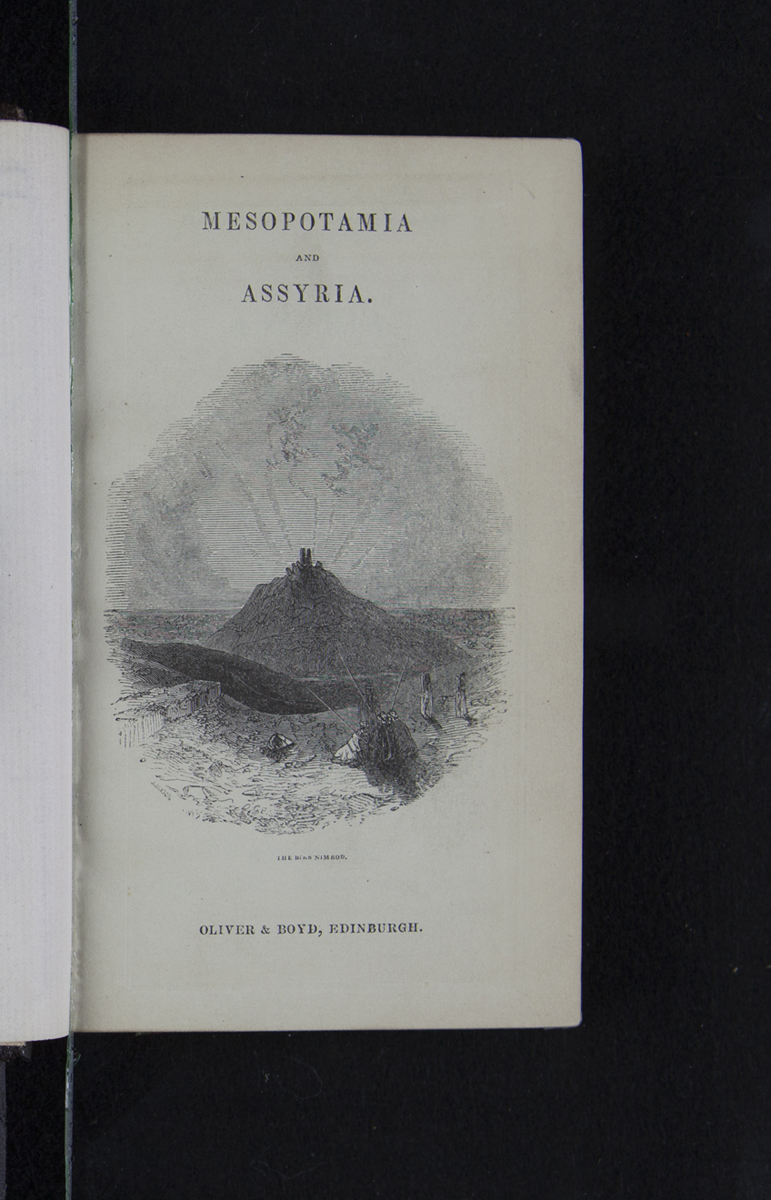
Figure 1. James Baillie Fraser, Mesopotamia and Assyria: from the earliest ages to the present time; with illustrations of their natural history. Edinburgh: Oliver & Boyd (1842).
DS71 .F863m 1842
The work by the Scottish explorer brought views of the ancient world into domestic salons and drawing rooms. These archaeological expeditions were sometimes coupled with ethically questionable collection practices—by professional and wealthy amateur European researchers–but their published accounts spurred public interest in Mesopotamian cultures. ↩
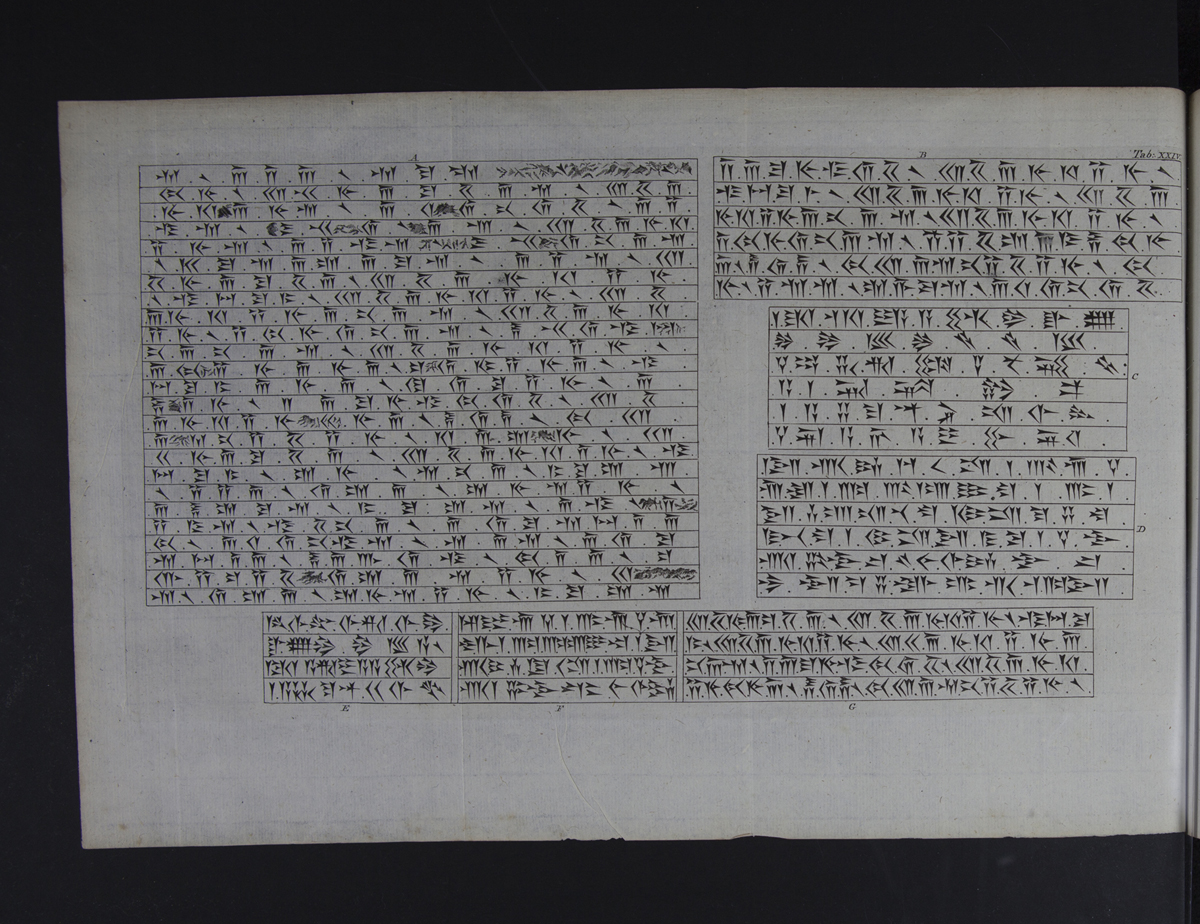
Figure 2. Carsten Niebuhr, Beschreibung von Arabien aus eigenen Beobachtungen und in Lande selbst gesammleten Nachrichten. Copenhagen: Nicolaus Möller; Leipzig: B.C. Breitkopf und Sohn (1772).
DS206 .N55b 1772
This elegantly drawn and printed image from pioneering Danish scholar and explorer, Carsten Niebhur, provides a carefully studied facsimile of the “arrow-headed” inscription. ↩


Figure 3. William Oldys, A critical and historical account of all the celebrated libraries in foreign countries, as well ancient as modern. London : Printed for J. Jolliffe, 1739.
Z721.O44c
Oldys provides a list of libraries that he considers significant from ancient times to the present, and his checklist offers a view of an 18th century knowledge of antiquity, gleaned largely from textual sources. ↩
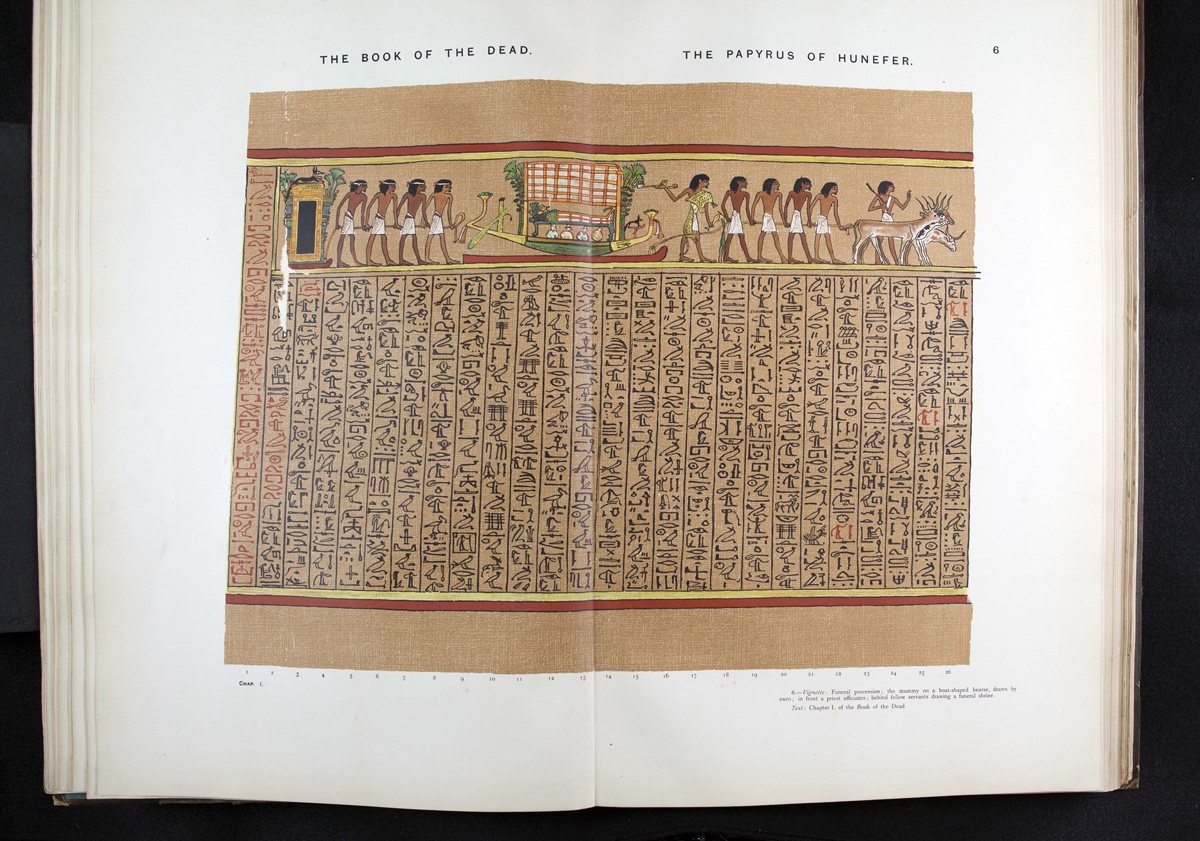
Figure 4. E.A. Wallis Budge, The Book of the dead. Facsimiles of the papyri of Hunefer, Anhai, Kerāsher and Netchemet, with supplementary text from the papyrus of Nu; Printed by order of the Trustees. London: Sold at the British Museum; and by Longmans & Co. [etc.], 1899
***PJ1555.A3 1899
Budge was a major figure in Egyptological studies. This beautifully produced volume contains authoritative commentary and translations of significant papyri held by the British Museum, whose Trustees sponsored the publication, thus making these treasures of ancient Egypt available for wider study and appreciation. ↩
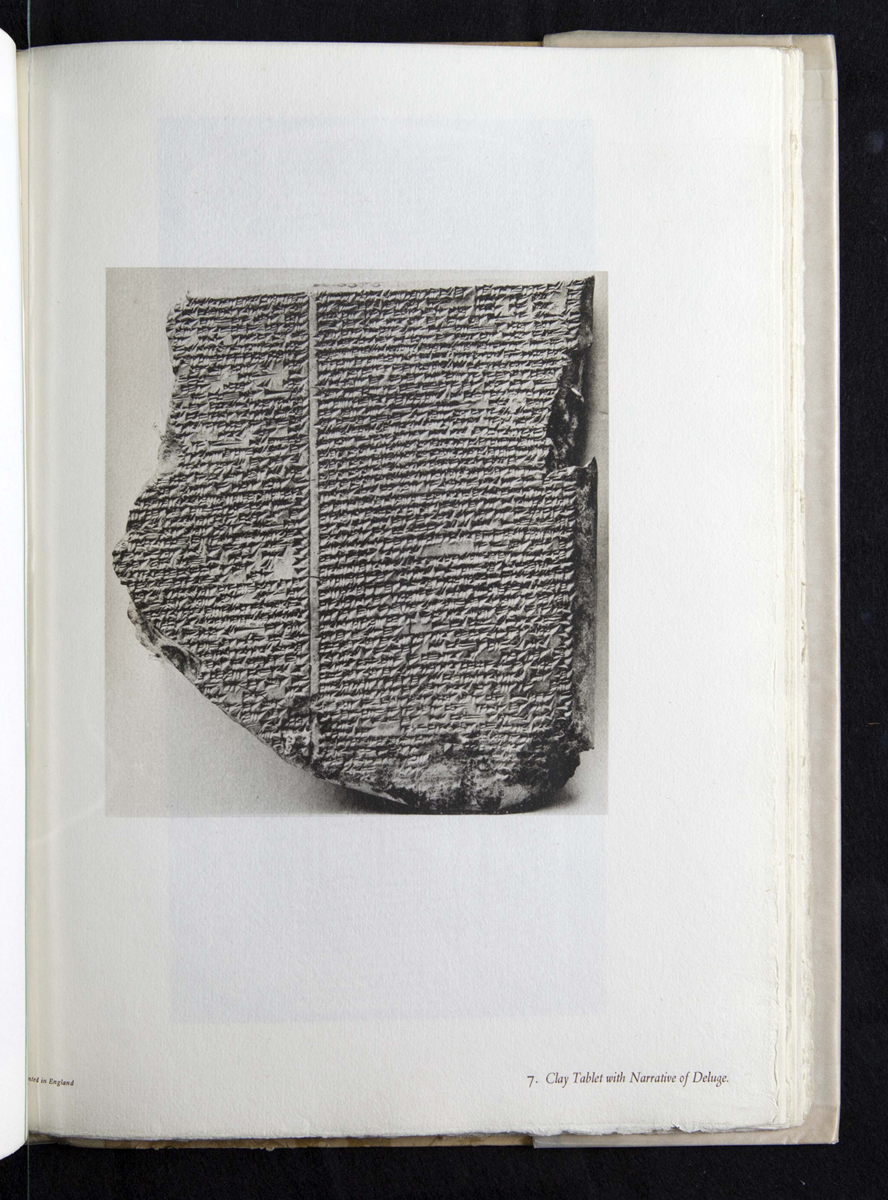
Figure 5. Frederic Kenyon, Ancient Books and Modern Discoveries, Chicago: The Caxton Club, 1927.
Z112 K42a
Clay tablets are remarkably durable, and Bablyonian texts, such as this account of the Deluge, have been preserved for many millennia. The even hand and regular formation of cuneiform characters shows this was made by a professional scribe used to the rapid motion of the stylus in the soft surface. ↩
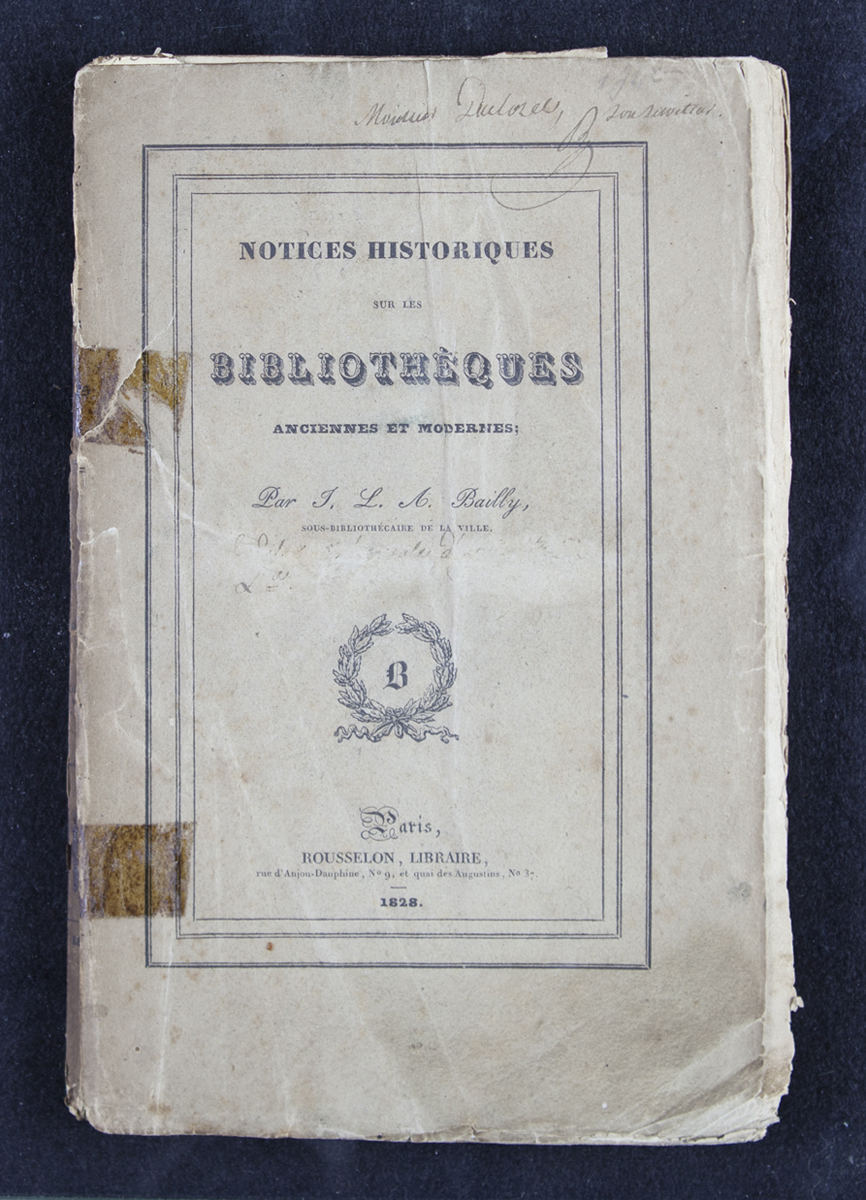
Figure 6. J.L.A. Bailly, Notices historiques sur les bibliothèques anciennes et modernes; suivies d’un tableau comparatif des produits de la presse de 1812 à 1825 et d’un recueil de lois et ordonnances concernant les bibliothèques. Paris : Rousselon, 1828.
Z721.B158n
Bailly’s book on ancient and modern libraries contains, among other details, an account of the burning of the library at Alexandria. A contemporary, 1828, review of this book (in Bulletin general et universel des announces ) noted that much of the material was copied directly from other sources. ↩

Figure 7. Joseph Balthaszar Silvestre, Universal Palaeography: or, Fac-similes of writings of all nations and periods. London: H. G. Bohn (1850).
* Z113 .S58pE
Silvestre’s masterful copies of ancient artifacts is a rich source of information, as well as a luxury artifact. The chromolithographs offer a detailed view of scripts from all periods and places, including this copy of a Phonecian script on beautifully rendered papyrus. ↩
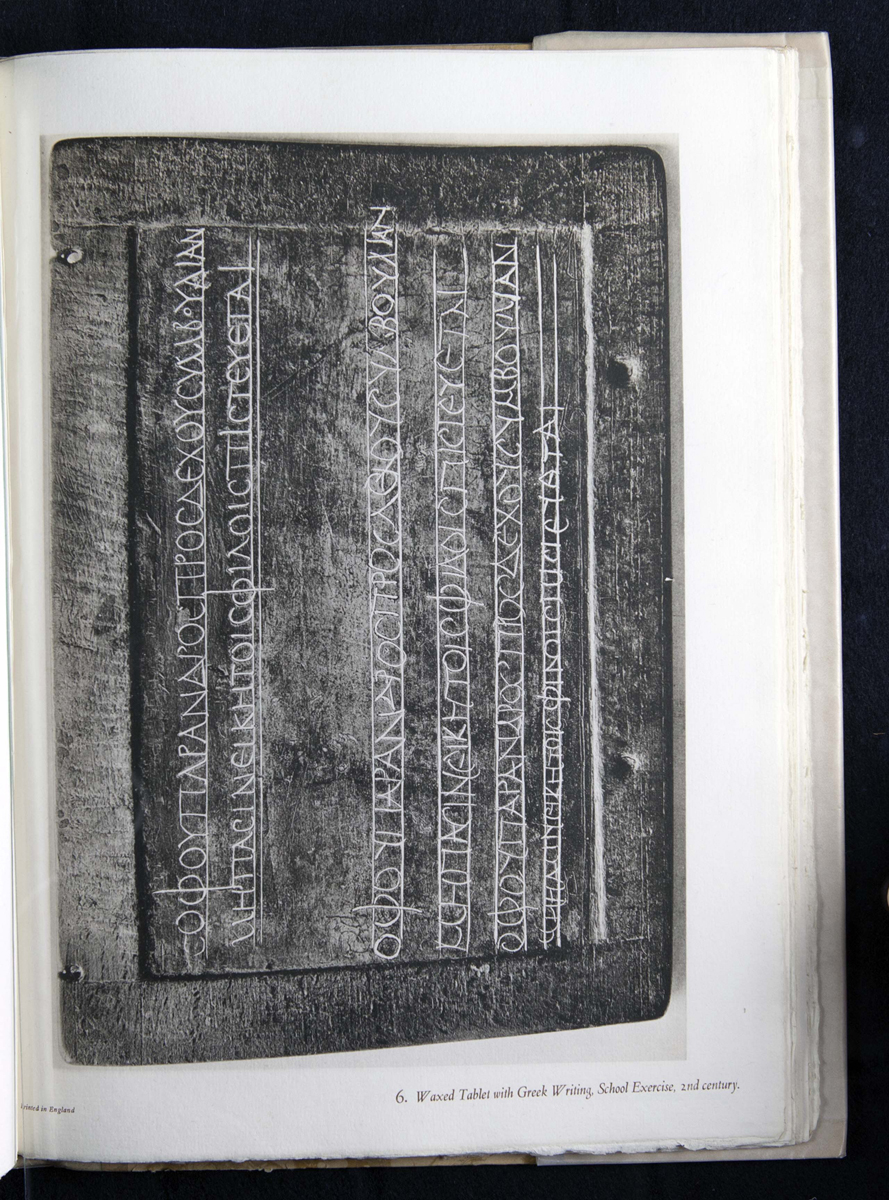
Figure 8. Frederic Kenyon, Ancient Books and Modern Discoveries, Chicago: The Caxton Club, 1927.
Z112 K42a
Greek writing exercise on a tablet, providing evidence of the process of learning the letters through copying. ↩
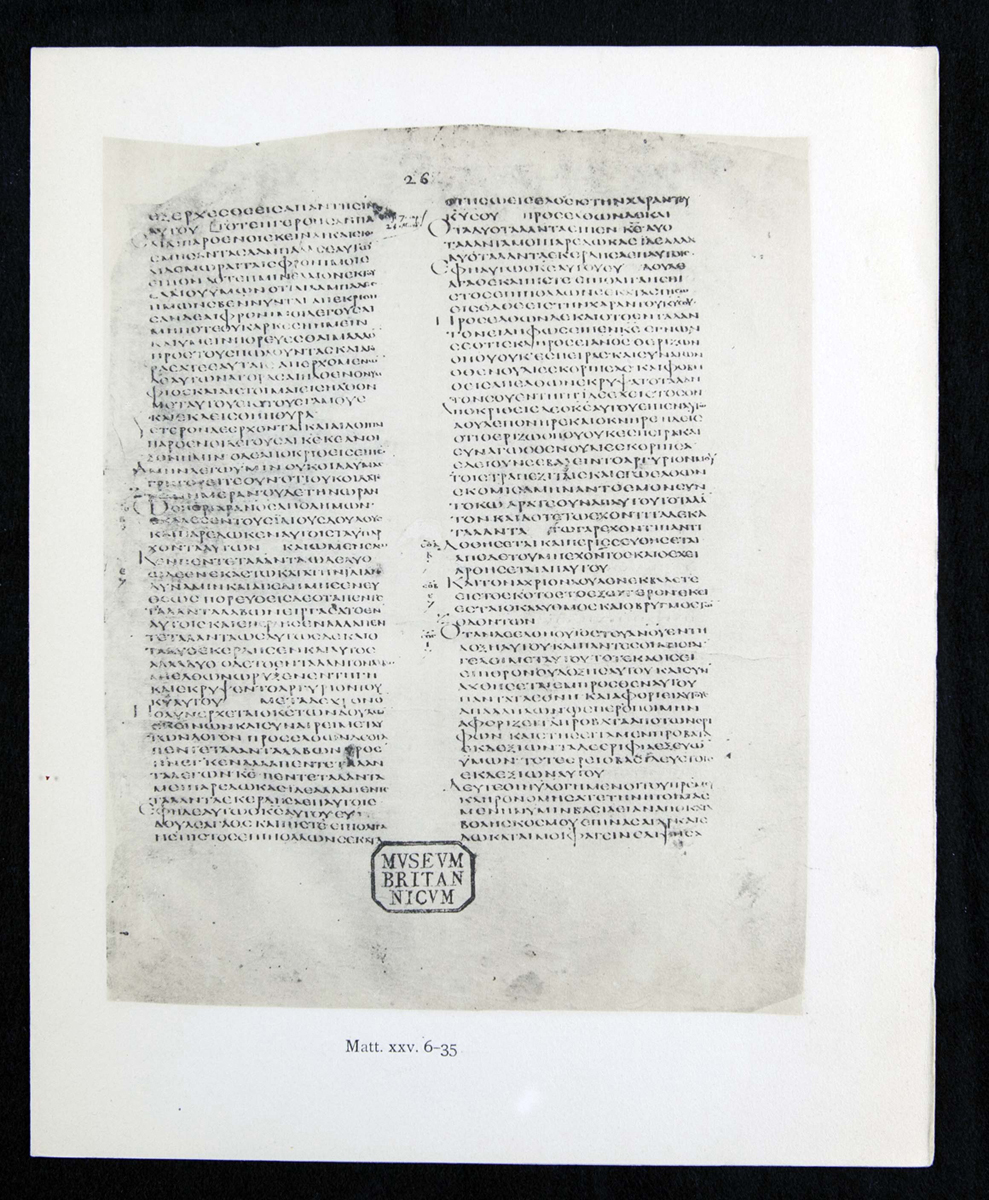
Figure 9. Codex Alexandrinus, London: Printed by order of the Trustees of the British Museum, 1909.
Z115Z B47A4
This Codex is one of the oldest extant copies of the Septuagint and New Testament. This photographic facsimile represents a change in reproduction, since it was done photographically from the original, rather than redrawn. The manuscript was given to Charles I of England, and though it is not clear where the manuscript was originally produced, it resided in Alexandria for centuries, and much work has been done to study the textual sources and material evidence in the object. ↩
All images are from book in the Charles E. Young Research Library at UCLA, unless otherwise noted.